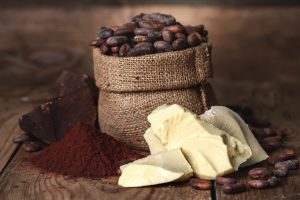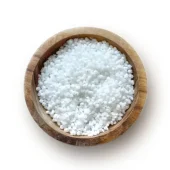As Valentine’s Day descends upon us, lovers worldwide will be agonizing over the perfect offering to reflect heartfelt feelings for their significant others. Chocolate products go hand in hand with Valentine’s Day. According to USA Today, consumers will spend approximately $1.8 million on chocolate products for Valentine’s Day in 2018. What a perfect time to consider the intricate nuances of cocoa powder!
The cocoa powder making process all starts with fermented, dried and roasted cacao beans. The beans are cracked into nibs, which are then ground into a paste. This paste is called cocoa liquor. The cocoa liquor
goes through a separation process which consists of a hydraulic pressing cycle at very high pressure using a series of fine filters and sieves. This separation procedure results in two by-products: cocoa butter and cocoa cake. The cocoa cake is the crumbly leftover solids which is subsequently ground into a fine powder, known also as unsweetened cocoa powder. There are two types of unsweetened cocoa powder classifications, natural and dutch-processed. The two have different chemical properties and therefore, different functions in usage.
Natural Cocoa Powder is light to medium brown in color and highly acidic, with a pH falling somewhere between 5 and 6. Natural cocoa powder is bitter with a very strong and concentrated chocolate flavor. Because it is acidic, it is commonly used in recipes involving baking soda. Baking soda is pure sodium bicarbonate, a base. Because of their opposing traits, the two react to each other. The resulting chemical reaction produces bubbles of carbon dioxide that expand with high oven temperatures, allowing baked goods to rise. The cocoa powder found on the shelves of your local grocery store is more often than not, natural.
Dutched Cocoa Powder, also known as alkalized cocoa powder, starts with cacao beans that have been washed in an alkaline solution of potassium carbonate which neutralizes the acidity to a pH of 7. This dutch process may result in a darker hue, but not necessarily. Alkalizing the cocoa creates a flavor that is smoother, more mellow; often described as earthy, with woodsy notes. It also makes the powder more soluble in liquid, which is important for beverage product applications. Dutched cocoa powder is most often used with recipes calling for baking powder. Baking powder is a blend of acid, most commonly calcium acid phosphate, and alkali, sodium bicarbonate, and has a neutral pH. There are also heavily dutch-processed cocoa powders on the market that bring the cocoa powder to an alkaline level of 8. This variety of cocoa powder carries a very dark to black color, commonly referred to as Black Dutched Cocoa Powder.
Another interesting distinction between the various cocoa powders that Jedwards International supplies are those categorized as 10/12 and 20/22 fat. This refers to the fat content in the cocoa powder. The degree to which the fat is extracted from the cocoa powder constitutes the appropriate categorization. The 10/12 has ten to twelve percent cocoa butter in the cocoa powder. Subsequently, the cocoa powder designated as 20/22 has twenty to twenty-two percent of cocoa butter, yielding a higher fat content.
Determining which cocoa powder is best for your formulation is dependent first and foremost on what ingredients are called for. For dessert sauces, ice cream, pudding and any other formulations that don’t rely on chemical leaveners, the choice of cocoa powder is highly subjective based on personal preference, as it won’t have an impact on the dessert’s texture.







